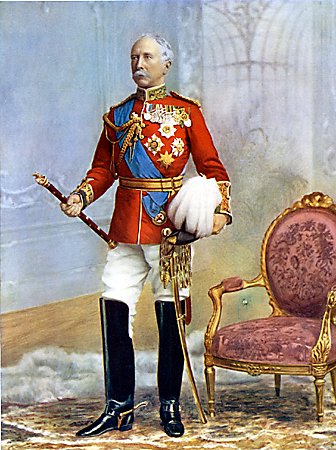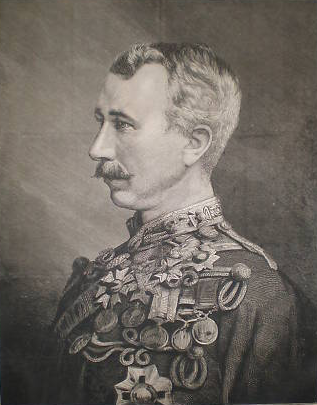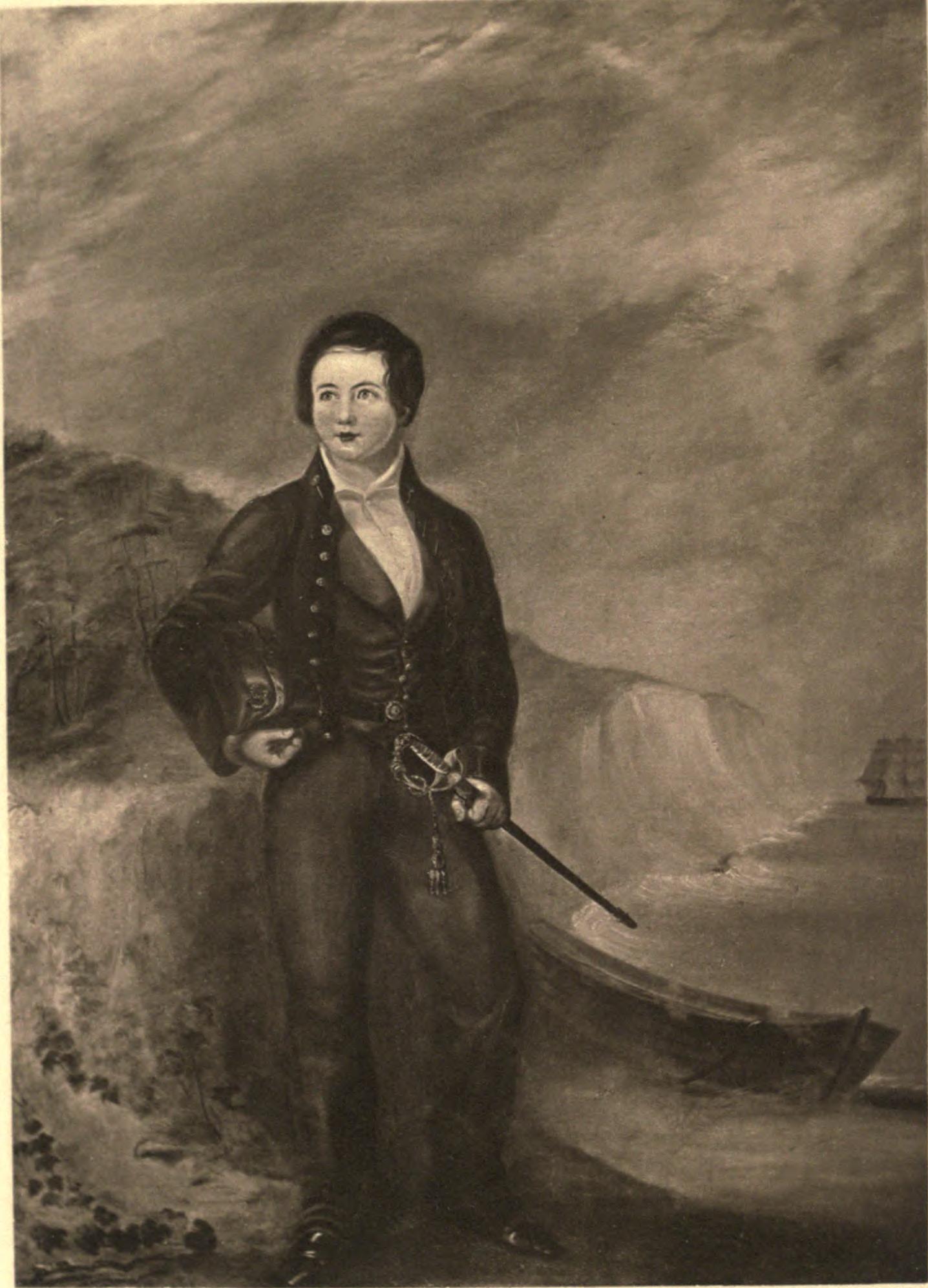|
Battle Of Ulundi
The Battle of Ulundi took place at the Zulu capital of Ulundi (Zulu:''oNdini'') on 4 July 1879 and was the last major battle of the Anglo-Zulu War. The British army broke the military power of the Zulu nation by defeating the main Zulu army and immediately afterwards capturing and burning the royal kraal of oNdini. Prelude After the decisive Zulu victory at the battle of Isandlwana in January over Chelmsford's main column and the consequent defeat of the first invasion of Zululand, the British launched a new invasion of Zululand. In April 1879 despite recent battles at Kambula and Gingindlovu which had resulted in serious losses for the Zulus, the British were back at their starting point. News of the defeat at Isandlwana had hit Britain hard. In response, a flood of reinforcements had arrived in Natal with which Chelmsford prepared a second invasion of Zululand. Lord Chelmsford was aware by mid June that Sir Garnet Wolseley had superseded his command of the British for ... [...More Info...] [...Related Items...] OR: [Wikipedia] [Google] [Baidu] |
Anglo-Zulu War
The Anglo-Zulu War was fought in 1879 between the British Empire and the Zulu Kingdom. Following the passing of the British North America Act of 1867 forming a federation in Canada, Lord Carnarvon thought that a similar political effort, coupled with military campaigns, might succeed with the African Kingdoms, tribal areas and Boer republics in South Africa. In 1874, Sir Bartle Frere was sent to South Africa as High Commissioner for the British Empire to effect such plans. Among the obstacles were the armed independent states of the South African Republic and the Kingdom of Zululand.Knight (1992, 2002), p. 8. Frere, on his own initiative, sent a provocative ultimatum on 11 December 1878 to the Zulu king Cetshwayo and upon its rejection sent Lord Chelmsford to invade Zululand. The war is notable for several particularly bloody battles, including an opening victory of the Zulu at the Battle of Isandlwana, followed by the defence of Rorke's Drift by a small British force from ... [...More Info...] [...Related Items...] OR: [Wikipedia] [Google] [Baidu] |
Garnet Joseph Wolseley, 1st Viscount Wolseley
Field Marshal Garnet Joseph Wolseley, 1st Viscount Wolseley, (4 June 183325 March 1913), was an Anglo-Irish officer in the British Army. He became one of the most influential and admired British generals after a series of successes in Canada, West Africa and Egypt, followed by a central role in modernizing the British Army in promoting efficiency. He served in Burma, the Crimean War, the Indian Mutiny, China, Canada and widely throughout Africa—including his Ashanti campaign (1873–1874) and the Nile Expedition against Mahdist Sudan in 1884–85. Wolseley served as Commander-in-Chief of the Forces from 1895 to 1900. His reputation for efficiency led to the late 19th century English phrase "everything's all Sir Garnet", meaning, "All is in order." Early life and education Lord Wolseley was born into a prominent Anglo-Irish family in Dublin, the eldest son of Major Garnet Joseph Wolseley of the King's Own Scottish Borderers (25th Foot) and Frances Anne Wolseley (''née ... [...More Info...] [...Related Items...] OR: [Wikipedia] [Google] [Baidu] |
Oxen
An ox ( : oxen, ), also known as a bullock (in BrE British English (BrE, en-GB, or BE) is, according to Oxford Dictionaries, "English as used in Great Britain, as distinct from that used elsewhere". More narrowly, it can refer specifically to the English language in England, or, more broadly, ..., AusE, and IndE), is a male bovine trained and used as a draft animal. Oxen are commonly castration, castrated adult male cattle; castration inhibits testosterone and aggression, which makes the males docile and safer to work with. Cows (adult females) or bulls (intact males) may also be used in some areas. Oxen are used for Plough, plowing, for transport (pulling carts, hauling wagons and even riding), for threshing grain by trampling, and for powering machines that grind grain or supply irrigation among other purposes. Oxen may be also used to skidder, skid logs in forests, particularly in low-impact, select-cut logging. Oxen are usually yoked in pairs. Light work such a ... [...More Info...] [...Related Items...] OR: [Wikipedia] [Google] [Baidu] |
Elephant
Elephants are the largest existing land animals. Three living species are currently recognised: the African bush elephant, the African forest elephant, and the Asian elephant. They are the only surviving members of the family Elephantidae and the order Proboscidea. The order was formerly much more diverse during the Pleistocene, but most species became extinct during the Late Pleistocene epoch. Distinctive features of elephants include a long proboscis called a trunk, tusks, large ear flaps, pillar-like legs, and tough but sensitive skin. The trunk is used for breathing, bringing food and water to the mouth, and grasping objects. Tusks, which are derived from the incisor teeth, serve both as weapons and as tools for moving objects and digging. The large ear flaps assist in maintaining a constant body temperature as well as in communication. African elephants have larger ears and concave backs, whereas Asian elephants have smaller ears, and convex or level backs. Elephants ... [...More Info...] [...Related Items...] OR: [Wikipedia] [Google] [Baidu] |
Garnet Wolseley
Field Marshal Garnet Joseph Wolseley, 1st Viscount Wolseley, (4 June 183325 March 1913), was an Anglo-Irish officer in the British Army. He became one of the most influential and admired British generals after a series of successes in Canada, West Africa and Egypt, followed by a central role in modernizing the British Army in promoting efficiency. He served in Burma, the Crimean War, the Indian Mutiny, China, Canada and widely throughout Africa—including his Ashanti campaign (1873–1874) and the Nile Expedition against Mahdist Sudan in 1884–85. Wolseley served as Commander-in-Chief of the Forces from 1895 to 1900. His reputation for efficiency led to the late 19th century English phrase "everything's all Sir Garnet", meaning, "All is in order." Early life and education Lord Wolseley was born into a prominent Anglo-Irish family in Dublin, the eldest son of Major Garnet Joseph Wolseley of the King's Own Scottish Borderers ( 25th Foot) and Frances Anne Wolseley (''née'' Sm ... [...More Info...] [...Related Items...] OR: [Wikipedia] [Google] [Baidu] |
Rorke's Drift
The Battle of Rorke's Drift (1879), also known as the Defence of Rorke's Drift, was an engagement in the Anglo-Zulu War. The successful British defence of the mission station of Rorke's Drift, under the command of Lieutenants John Chard of the Royal Engineers and Gonville Bromhead, 24th Regiment of Foot began when a large contingent of Zulu warriors broke off from their main force during the final hour of the British defeat at the day-long Battle of Isandlwana on 22 January 1879, diverting to attack Rorke's Drift later that day and continuing into the following day. Just over 150 British and colonial troops defended the station against attacks by 3,000 to 4,000 Zulu warriors. The massive but piecemeal attacks by the Zulu on Rorke's Drift came very close to defeating the much smaller garrison, but were consistently repelled. Eleven Victoria Crosses were awarded among the defenders, along with a number of other decorations and honours. Prelude Rorke's Drift, known as ''kwaJi ... [...More Info...] [...Related Items...] OR: [Wikipedia] [Google] [Baidu] |
John Chard
Colonel John Rouse Merriott Chard (21 December 1847 – 1 November 1897) was a British Army officer who received the Victoria Cross, the highest military decoration for valour "in the face of the enemy" that can be awarded to members of the British armed forces. He earned the decoration for his role in the defence of Rorke's Drift in January 1879 where he assumed command of the outpost and a small garrison of 139 soldiers and successfully repulsed an assault by some 3,000 to 4,000 Zulu warriors. The battle was recreated in the film ''Zulu'' in which Chard was portrayed by Stanley Baker. Born near Plymouth, Chard attended the Royal Military Academy in Woolwich and was commissioned into the Royal Engineers in July 1868. He was involved with the construction of fortifications in the Bermuda Garrison (three years) and at Malta (two years) before he was deployed to southern Africa at the start of the Anglo-Zulu War. At the end of the war he returned to a hero's welcome in Englan ... [...More Info...] [...Related Items...] OR: [Wikipedia] [Google] [Baidu] |
Royal Engineers
The Corps of Royal Engineers, usually called the Royal Engineers (RE), and commonly known as the ''Sappers'', is a corps of the British Army. It provides military engineering and other technical support to the British Armed Forces and is headed by the Chief Royal Engineer. The Regimental Headquarters and the Royal School of Military Engineering are in Chatham in Kent, England. The corps is divided into several regiments, barracked at various places in the United Kingdom and around the world. History The Royal Engineers trace their origins back to the military engineers brought to England by William the Conqueror, specifically Bishop Gundulf of Rochester Cathedral, and claim over 900 years of unbroken service to the crown. Engineers have always served in the armies of the Crown; however, the origins of the modern corps, along with those of the Royal Artillery, lie in the Board of Ordnance established in the 15th century. In Woolwich in 1716, the Board formed the Royal Regime ... [...More Info...] [...Related Items...] OR: [Wikipedia] [Google] [Baidu] |
Cetshwayo
King Cetshwayo kaMpande (; ; 1826 – 8 February 1884) was the king of the Zulu Kingdom from 1873 to 1879 and its Commander in Chief during the Anglo-Zulu War of 1879. His name has been transliterated as Cetawayo, Cetewayo, Cetywajo and Ketchwayo. Cetshwayo consistently opposed the war and sought fruitlessly to make peace with the British, and was defeated and exiled following the Zulu defeat in the war. He was later allowed to return to Zululand, where he died in 1884. Early life Cetshwayo was a son of Zulu king Mpande and Queen Ngqumbazi, half-nephew of Zulu king Shaka and grandson of Senzangakhona. In 1856 he defeated and killed in battle his younger brother Mbuyazi, Mpande's favourite, at the Battle of Ndondakusuka. Almost all Mbuyazi's followers were massacred in the aftermath of the battle, including five of Cetshwayo's own brothers. Following this he became the ruler of the Zulu people in everything but name. He did not ascend to the throne, however, as his father was ... [...More Info...] [...Related Items...] OR: [Wikipedia] [Google] [Baidu] |
Flying Column
A flying column is a small, independent, military land unit capable of rapid mobility and usually composed of all arms. It is often an ''ad hoc'' unit, formed during the course of operations. The term is usually, though not necessarily, applied to forces less than the strength of a brigade. As mobility is its primary purpose, a flying column is accompanied by the minimum of equipment. It generally uses suitable fast transport; historically, horses were used, with trucks and helicopters replacing them in modern times. History Flying columns are mentioned by Sun Tzu in his ''Art of War'' in such a fashion that indicates it was not a new concept at the time of his writing. This dates to at least the middle 6th century BC, and possibly the late 8th century BC. The Roman army made good use of the flying columns in the early imperial era. One such commander, the proconsul Germanicus Caesar used flying columns to great effect in the early stages of the campaign against one of Rome' ... [...More Info...] [...Related Items...] OR: [Wikipedia] [Google] [Baidu] |
Evelyn Wood (British Army Officer)
Field Marshal Sir Henry Evelyn Wood, (9 February 1838 – 2 December 1919) was a British Army officer. After an early career in the Royal Navy, Wood joined the British Army in 1855. He served in several major conflicts including the Indian Mutiny where, as a lieutenant, he was awarded the Victoria Cross, the highest award for valour in the face of the enemy that is awarded to British and Imperial forces, for rescuing a local merchant from a band of robbers who had taken their captive into the jungle, where they intended to hang him. Wood further served as a commander in several other conflicts, notably the Third Anglo-Ashanti War, the Anglo-Zulu War, the First Boer War and the Mahdist War. His service in Egypt led to his appointment as Sirdar where he reorganised the Egyptian Army. He returned to Britain to serve as General Officer Commanding-in-Chief Aldershot Command from 1889, as Quartermaster-General to the Forces from 1893 and as Adjutant General from 1897. His last a ... [...More Info...] [...Related Items...] OR: [Wikipedia] [Google] [Baidu] |



_colourised.png)





